Jewelweed poses as a useless weed along the edges of the woods, but is definitely a wild medicinal plant you should never walk by without gathering. The two species of this tall plant are also commonly referred to as “garden balsam”, “whistle weed”, and the “touch-me-not.
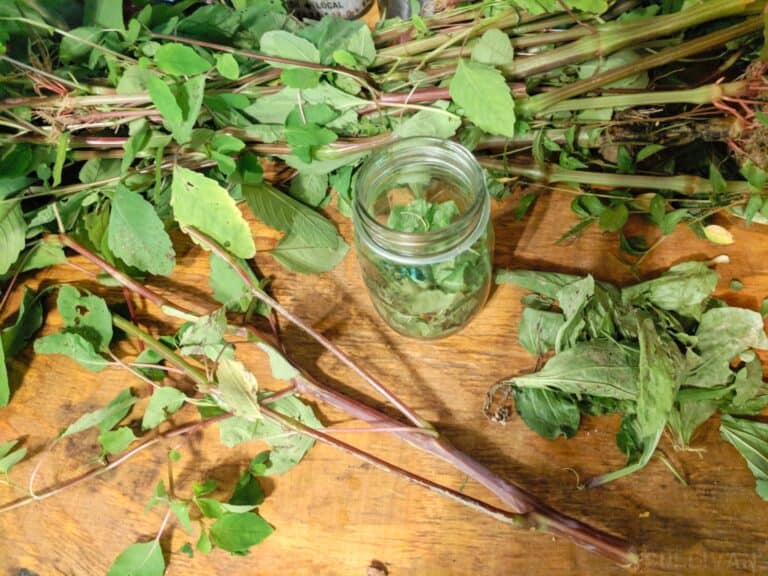
The seed pods that are produced by jewelweed “explode” when touched – sending the little seeds inside flying everywhere to sprout and grow. Even though the explosions are harmless and fairly fun to watch, this is why is has been dubbed the touch-me-not plant.
Children in my neck of the woods often refer to jewelweed plants as “poppers” as they seek them out to create the little explosion of seeds – giggling as they move on with their hunt for more.
Between the fun popping of seeds and the natural whistle making opportunity jewelweed offers, there might just not be a more fun plant growing out in the woods.
The whistle weed moniker stems from the simple and natural little whistles you can make by poking a few holes in one of jewelweed’s hollow stems. It is a major attractor of butterflies, bumblebees, and hummingbirds.
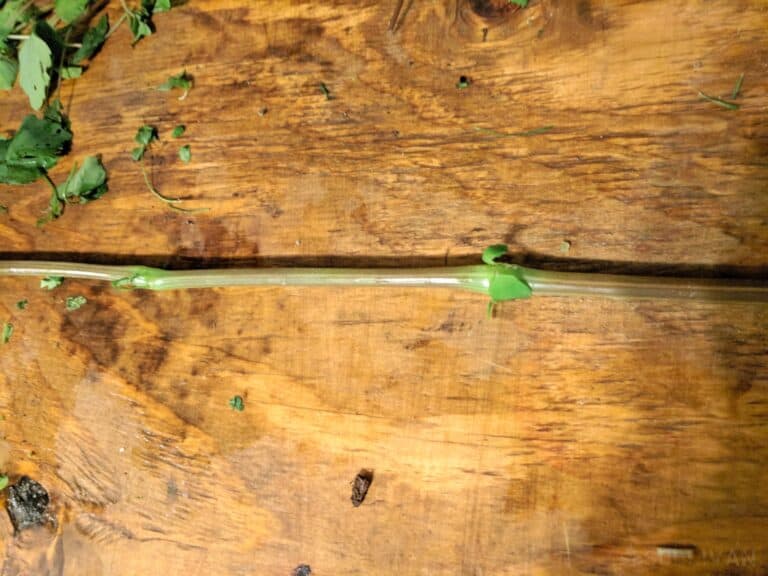
I only recently learned about the medicinal value and healing properties of jeweled. I knew my free ranging goats loved to eat it, and that it seems to thrive no matter what the weather conditions, but that about exhausted my knowledge of this beneficial weed.
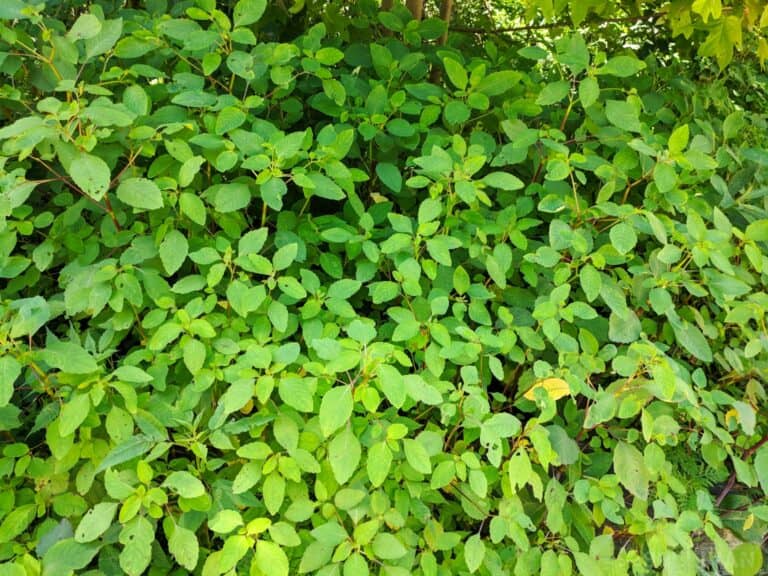
Is Jewelweed Edible?
The plant is edible, but most parts of it must be cooked before consumption to remove potentially harmful natural compounds. Jewelweed seeds taste similar to walnuts.
While you can eat the tiny seeds in small amounts safely, consuming too many of them could provoke a wicked case of diarrhea. Folks who are prone to kidney stones should probably avoid eating from the jewelweed plant because it contains high levels of oxalates – even after cooking.
The vibrantly colored yellow or orange flowers are also edible. If eating the leaves uncooked, it is best to harvest them during the early spring while they are still young.
Before using the leaves in a salad, boil them for 10 minutes, dump the water, refill the cook pot with fresh water, and boil for another 10 minutes.
Jewelweed leaves are a common natural stir fry ingredient.
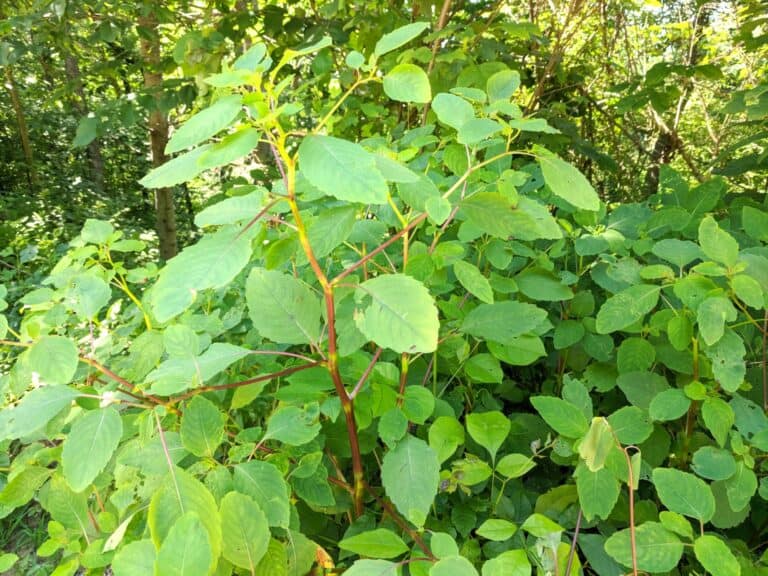
Jewelweed Uses
Jewelweed boast antifungal and antimicrobial properties. It’s often used as a sole or base ingredient to get rid of poison ivy, dermatitis, to treat bug bites and stings, cure athlete’s foot, minor burns, swelling around bruises, joint pain, inflammation, in the promotion of steady blood flow post childbirth, and poisoning from fish.
If you rub freshly picked and crushed jewelweed directly onto the skin after a bug bite or sting or coming into contact with poison ivy, poison oak, or poison sumac, the sense of relief comes almost instantly.
You can also make a salve or wound wash out of either fresh or dried jewelweed to treat the same conditions. Learn how to make jewelweed salve by checking out my homemade recipe here.
Some users maintain the jewelweed wash or poultice can also help either stop or reduce symptoms commonly associated with a topical allergic reaction to plants, animals, or insects.
Orange flowering jewelweed might be a more potent natural medicinal agent than the plants that boast yellow flowers – but your experience may vary. Both varieties of the whistle weed plant have a shallow root system, and are easy to remove from the ground.
History of Jewelweed
Sap from the crushed leaves of the jewelweed plant were widely used by Native Ameicans, particularly those living in my region of Appalachia, when stricken with poison ivy.
The Potawatomi, Meskwaki, Southern Cherokee, Omaha, and Chippewa tribes used jewelweed not only to alleviate the symptoms of poison ivy, oak, and sumac, but also as a treatment for stinging nettle rashes and various insect bites and stings. The plant is a fairly common ingredient in commercially produced poison ivy creams.
For centuries, the Japanese used the juice from the flowers produced by jewelweed to paint the skin to get rid of rashes and soothe the itching and burning they produce. In Chinese herbal medicine, jewelweed has long been used topically to treat joint pain and swelling.
The aerial portions of the jewelweed plant were also harvested to use in treatments for bruises and rheumatism.
Seeds from the colorful flowers the plant creates have been used to treat post childbirth blood flow problems and pain, as well as a natural menstruation aid.
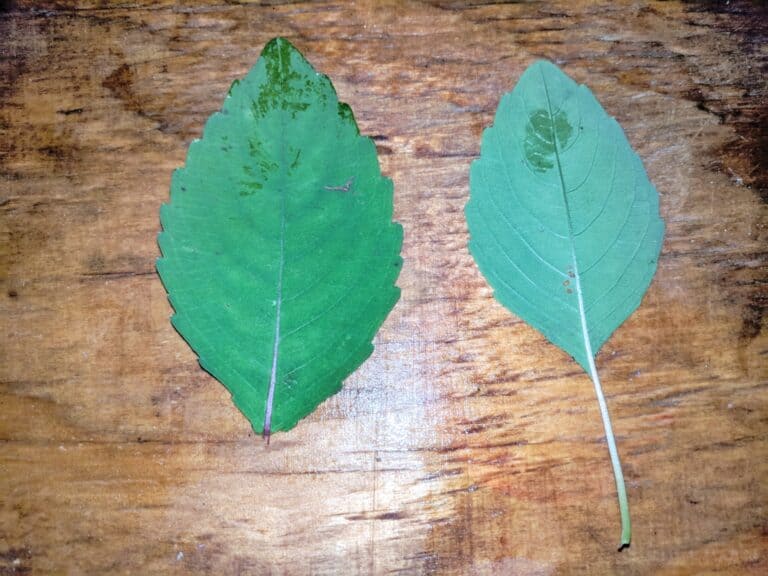
Identification
Jewelweed can grow just about anywhere, but tends to prefer wet wooded areas in partial to nearly full shade. It is an annual that self-seeds. The weak stems on the touch-me-not plant are arranged in an alternate pattern.
Leaves are toothed and oval shaped on the jewelweed plant. Every spring, new sprouts emerge from the earth, with the plant reaching a mature size before the end of August. Flowers emerge on jewelweed plants around the early weeks of July, and remain until frost kills the plant in the fall.
Jewelweed leaves repel water and allow the morning dew to bead up on them to such a degree they resemble beautiful little crystals. The leaves grow to reach about three inches long, and are more pale on their underbelly than they are on top.
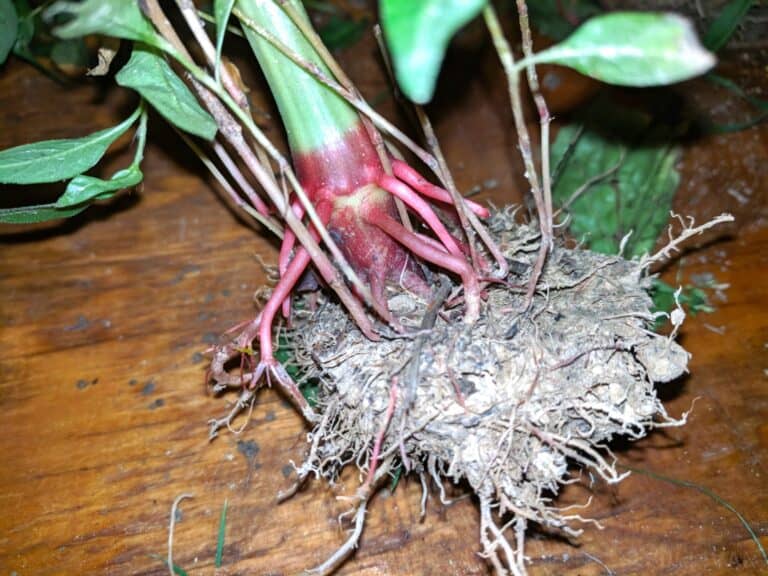
The plant is common throughout the Midwest, Eastern, and Northern portions of the United States. It can even be found in forests that are situated in floodplains – especially along the banks of waterways or ditches.
It grows aggressively and has to be cross-pollinated by either hummingbirds or insects to thrive. But, the pretty little flowers that never seem to fully open on the jewelweed plant have the ability to fertilize themselves and produce seed.
If the flowers on the whistle weed plant are cross-pollinated, they will grow larger than their self-pollinated peers and produce seeds at a much higher rate.
The flowers from cross-pollinated plants are about an inch long. On self-pollinated plants the flowers produced are only about 1mm long.
Jewelweed plants that produce yellow flowers also often have just a couple of pale brownish spots on them. The flowers are approximately as broad as they are long, with orange flowers always having three distinctive lobes.
The seeds that explode from the plant heads with a tad bit of noise are capsule-shaped, and split into two small but tight spirals when they are flung onto the ground.
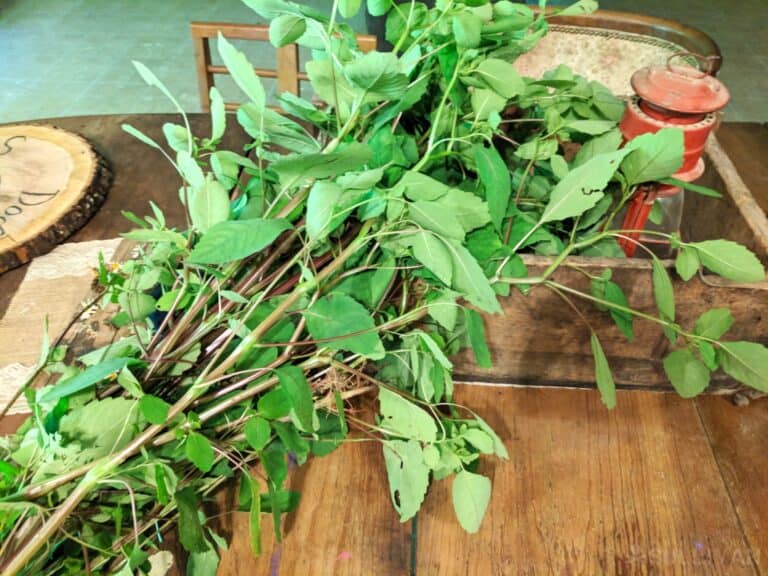
How to Harvest Jewelweed
The entire portion of the jewelweed plant that is growing above ground can be used as either food or medicine – or both. The optimal time to harvest from this wild wonderful weed is when it is flowering.
Simply pluck or snip the desired portions of the plant and use them immediately, boil to eat, or make a wound wash or salve using the natural ingredients.
How to Preserve Jewelweed
You can dehydrate all above ground parts of the jewelweed plant by drying it. Dehydrate the plant parts as you would herbs in an electric or solar dehydrator The hang dry method can also be used to dry the wild medicinal weed.
Once dried, the jewelweed should be stored in an airtight container, and kept in a cool dark, place until ready to use. Mason jars and vacuum sealed bags make superb airtight storage containers.
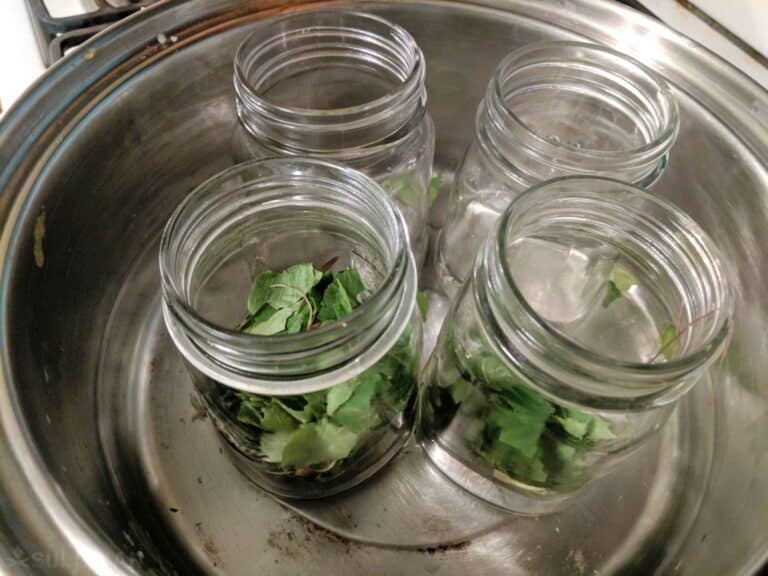
How to Make a Jewelweed Poultice
If using the jewelweed – either fresh or dried, as a poultice, change the wrap at least twice a day. You can also pour the cooled wound wash over a clean cloth that has been wrapped around the skin to make a more portable and survival first aid ready, style of poultice.
Once the cloth dries, remove it and apply a fresh cloth that has once again been doused with the wound wash.
Jewelweed Soak
When treating an intense case of poison ivy, oak, or sumac, turn the bathtub into one massive jewelweed wound wash soaking area.
Fill the tub as high as needed with water, soak crushed leaves in the water (as hot as you can stand it) and soak in the mixture for about 20 minutes a few times a day.
Jewelweed Insect Repellent
Mix crushed jewelweed leaves at a 1 to 2 ratio with either rubbing alcohol – vodka or witch hazel to make a natural insect repellent. The spray works great to deter mosquitoes and as a poison ivy, oak, or sumac preventative.
Natural Soap Additive
Toss a few pinches of dehydrated and powdered jewelweed leaves per bar into a batch of homemade soap to help fight itchiness from insect bites, various rashes, and to soothe sun dried skin.
Below is my favorite skin healing soap additive mixture that can be used with any base homemade soap recipe.
Jewelweed Soap Additive Mixture
Ingredients
- 1 cup jewelweed leaves, stems, and flowers finely chopped
- ½ cup lavender finely chopped or 3 drops of lavender essential oil
- 1 cup finely chopped plantain
- 8 ounces coconut oil if your soap base recipe does not already call for it
Instructions
- Combine the jewelweed and the plantain in a bowl with just enough to cover them and stir thoroughly to combine.
- Allow the mixture to settle overnight in the refrigerator.
- Strain away the plant parts and keep the juice – which will be a brownish green shade in color.
- Combine the mixture and all other additives noted above into your favorite soap base recipe, and follow its instructions for completion and use.
Jewelweed Vinegar Infusion
This natural home remedy has a nearly indefinite shelf life when stored in an airtight container, in a cool dry place. You can gently rub or squirt the jewelweed vinegar infusion “juice” onto burns, bruises, or rashes to heal and to soothe them.
Directions
- Chop the jewelweed leaves, stems, or flowers (or all of these parts) and place them in a 1-quart Mason jar. Pack the contents lightly as you go until reaching at least one half to three-fourths of the way to the lip of the canning jar.
- Pour enough apple cider vinegar into the Mason jar to completely cover the jewelweed bids, and fill the jar to the top.
- Carefully stir the jar to prevent spilling while releasing any air bubbles that exist in the mixture.
- You can seal the Mason jar with a canning lid and ring. But, if you are concerned about the apple cider vinegar causing corrosion on the metal lid and ring over time, use a plastic canning jar lid, or skip the Mason jar and use an old but clean glass jar with a firm-fitting lid, instead.
- Let the jewelweed and apple cider vinegar mixture to infuse for about four weeks, There is really no need to shake daily, but it will not do any harm if you cannot resist the urge.
- Strain the mixture into another clean jar that boasts a firm-fitting lid and seal.
- To use, open the jar and pour a small amount onto a cotton ball that is applied to the infected skin area.
In my experience, the jewelweed and apple cider vinegar infusion should remain shelf-stable and potent for at least 12 months when stored properly – but likely can last a lot longer.
The more the jar is opened and exposed to the air, the shorter its shelf life. If you are making only a small batch of the infusion to use on a regular basis, the mixture could be strained into a squirt bottle instead.

Tara Dodrill is a homesteading and survival journalist and author. She lives on a small ranch with her family in Appalachia. She has been both a host and frequent guest on preparedness radio shows. In addition to the publication of her first book, ‘Power Grid Down: How to Prepare, Survive, and Thrive after the Lights go Out’, Dodrill also travels to offer prepping tips and hands-on training and survival camps and expos.

My father taught be about Jewel Weed and brings back memories. We have some growing on the side of a marsh and your article gives me ideas about using it.
Thank You
I opened up a fruit on a jewel weed plant, and I found red maggots inside,do you know if they were butterflies or not ,?
I’ve just used jewelweed for poison ivy and it does work immediately. And I noticed the rash had disappeared.
It does start itching after a few hours or soon as it’s washed off. Tried cortisone after getting home and it didn’t work as well.
Do you have a soap recipe to add this too? I read recently that the stems are better for poison ivy. Do you put the stems in your mixture for the preventative spray or just the leaves?
The jewelweed stem has a sap that gets rid of poison ivy when the sap is topically applied to skin that has or might develop into blisters. The stem breaks open easily.
And jewelweed might be growing near poison ivy plants because they like similar growing conditions, jewelweed preferring a little wetter soil than the poison ivy.